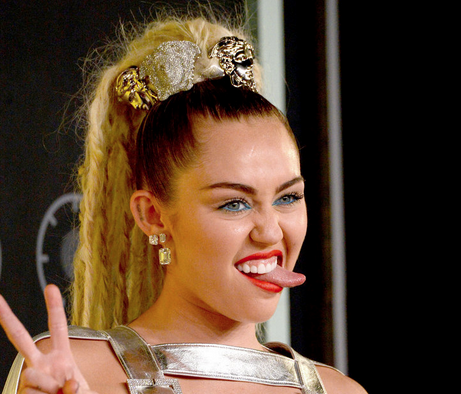![Selena Gomez' styling during her appearances to promote 2013 single "Come & Get It" - which included a bindi - were criticized as appropriation. [Hollywood Records/Disney]](http://www.jstudentboard.com/reporter/wp-content/uploads/2015/09/Screen-Shot-2015-09-17-at-2.38.56-PM.png)
While it can be applied to many things such as music and language, the term is often used to describe fashion. An example would be the dreadlocks Miley Cyrus wore while hosting the 2015 MTV Video Music Awards. Some viewers felt they were okay, while others felt upset.
Cultural appropriation is harmful because it, in most cases, takes the interesting aspects of a culture yet shows no concern over the discrimination and ridicule that may be faced by members of that culture. The history behind certain outfits can be meaningful, and it can be inappropriate for someone to wear these outfits to gain attention. Additionally, while celebrities might be praised as cool and cultural for wearing these outfits, people of their originating cultures may be considered foreign or out-of-place.
Robert Dunn, a senior attending Whitney High School (WHS) of Native American ancestry, told JSR, “I have seen people wear war bonnets, and those are equivalent to war medals. When I see that, it really pains me because you wouldn’t see people wearing it casually if they did not serve in a war.”
“I’ve had grandfathers and great grandfathers who have served in wars on behalf of Native people… Wearing Native outfits is very disrespectful because it is a culture that has been suppressed and criticized, yet people want to use it [as a fashion statement],” Dunn continued.
While cultural appropriation has been criticized a lot, there are people – even members of appropriated cultures – who find no problem with it. It can be seen as cultural appreciation; some believe that it promotes diversity and allows cultural exchanges.
Bernice Tadique, a senior attending WHS, expressed to JSR, “I don’t think it is necessarily mocking unless they do it in a very distasteful way. I’ve seen a lot of articles of people ranting about how something is culturally inappropriate, but I feel like it’s just good intentions gone wrong. I feel like a hairstyle or outfit can originate from a culture, but they cannot own it, especially now in a time of openness and diversity. It’s just going to keep happening.”
“I don’t think it is offensive. I see people who are not Filipino doing Filipino stuff, but I don’t care… I think it’s cool,” added Melissa Babiera, a WHS senior of Filipino descent.
Some cultural appropriation may also be the result of misunderstandings by people who have no intentions to offend. For example, some Korean-pop idols and Korean rappers have been criticized for wearing dreads or clothes stereotypically associated with black people, but say they were unaware that this was disrespectful.
In a July interview with Nylon, singer Zendaya – whose dreadlocks were the subject of allegedly-racist criticism by a television personality at the Academy Awards this year – discussed the difference between appropriation and appreciation.
“You have to be very careful,” she said. “Some things are really sacred and important to other cultures, so you have to be aware, politically, about those things before you just adopt them… I don’t know everything about every culture and every current event, but you grow and you learn… It’s a process for everyone.”
This difference is relatable to an annual event at WHS called International Day (ID) for which students dress up and enjoy food and performances displayed by different clubs, students, and guests from a variety of cultures. The idea behind it is to appreciate, experience, and discover different cultures that people may like.
“I think ID is fine because people are not wearing [clothing from other cultures] as costumes but rather as a way to respect and share other cultures and become more culturally aware. Whenever I would dress up, I would get my clothes from people who belong to that culture instead of trying to buy or make them,” Dunn told JSR.

